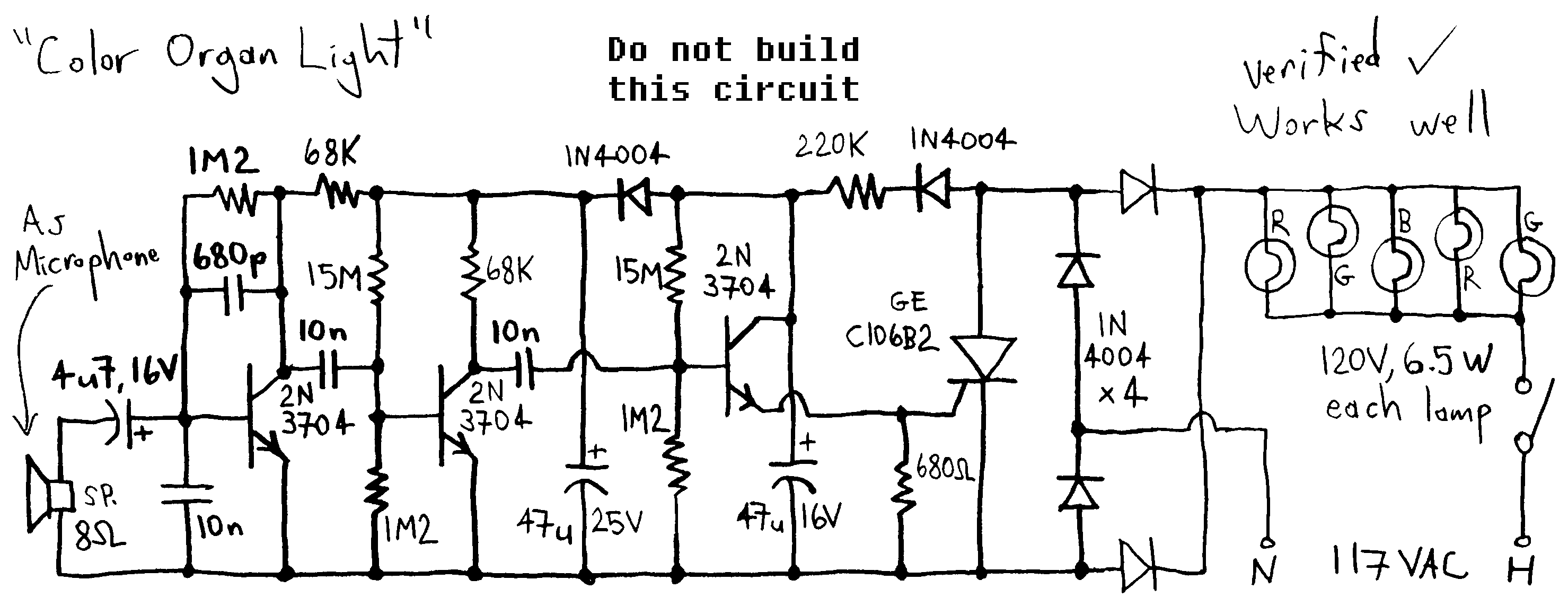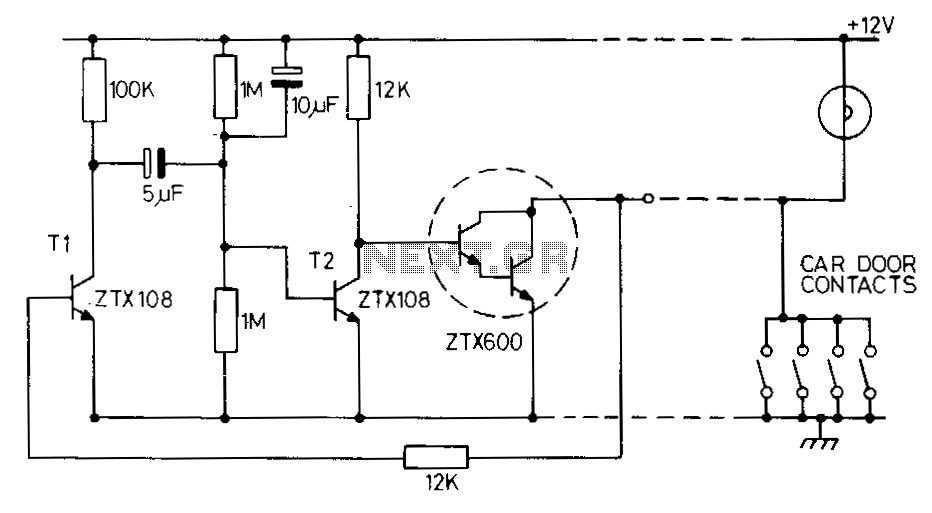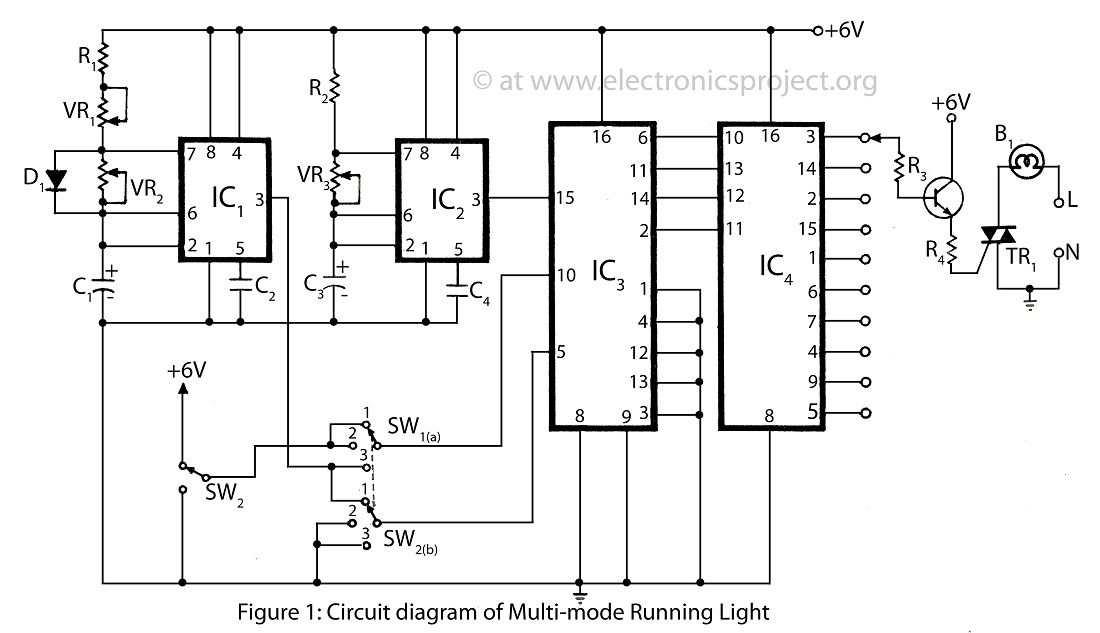
Color Organ Light

This circuit works REALLY well. Notice how it will fire even in complete silence. This provides a sort of automatic gain control.
The described circuit appears to function as an automatic gain control (AGC) system, which is crucial in various audio and signal processing applications. The AGC circuit is designed to maintain a consistent output level despite variations in the input signal amplitude. This is particularly useful in environments where the input signal may fluctuate widely, such as in audio recording or communication systems.
The circuit likely employs a feedback mechanism that monitors the output level and adjusts the gain accordingly. Key components in such a circuit typically include operational amplifiers (op-amps), resistors, capacitors, and possibly a diode for rectification. The op-amp can be configured in a non-inverting or inverting configuration depending on the desired output characteristics.
In operation, when the input signal is low or absent, the circuit will automatically increase the gain to ensure that the output remains at a usable level. Conversely, if the input signal is strong, the gain will be reduced to prevent distortion and clipping. This dynamic adjustment allows the circuit to "fire" or activate even in silence, as it can detect minute changes in the input signal.
The design may also incorporate a time constant, determined by the RC (resistor-capacitor) network, which influences how quickly the circuit responds to changes in input level. A longer time constant will yield smoother gain adjustments, while a shorter time constant will allow for faster response times, which can be beneficial in certain applications.
Overall, this AGC circuit is essential for ensuring optimal performance in systems where signal integrity and consistent output levels are critical.This circuit works REALLY well. Notice how it will fire even in complete silence. This provides a sort of automatic gain control. 🔗 External reference
The described circuit appears to function as an automatic gain control (AGC) system, which is crucial in various audio and signal processing applications. The AGC circuit is designed to maintain a consistent output level despite variations in the input signal amplitude. This is particularly useful in environments where the input signal may fluctuate widely, such as in audio recording or communication systems.
The circuit likely employs a feedback mechanism that monitors the output level and adjusts the gain accordingly. Key components in such a circuit typically include operational amplifiers (op-amps), resistors, capacitors, and possibly a diode for rectification. The op-amp can be configured in a non-inverting or inverting configuration depending on the desired output characteristics.
In operation, when the input signal is low or absent, the circuit will automatically increase the gain to ensure that the output remains at a usable level. Conversely, if the input signal is strong, the gain will be reduced to prevent distortion and clipping. This dynamic adjustment allows the circuit to "fire" or activate even in silence, as it can detect minute changes in the input signal.
The design may also incorporate a time constant, determined by the RC (resistor-capacitor) network, which influences how quickly the circuit responds to changes in input level. A longer time constant will yield smoother gain adjustments, while a shorter time constant will allow for faster response times, which can be beneficial in certain applications.
Overall, this AGC circuit is essential for ensuring optimal performance in systems where signal integrity and consistent output levels are critical.This circuit works REALLY well. Notice how it will fire even in complete silence. This provides a sort of automatic gain control. 🔗 External reference





